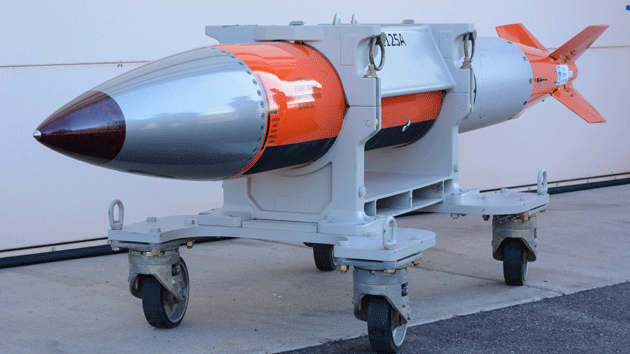
On 9 December 2017, the US Department of Energy’s National Nuclear Security Administration, which is tasked with ensuring the effectiveness, safety and security of the US nuclear weapons stockpile, announced that it had successfully completed two qualification flight tests for the US’ new B61-12 freefall nuclear weapon. The tests were reported as having taken place at the Tonopah Test Range in Nevada, and were completed in early November 2017. During the tests, inert versions of the weapons were released by two US Air Force (USAF) Boeing F-15E Strike EAGLE fighters. The development of the B61-12 includes a number of organisations namely Sandia National Laboratories and the Los Alamos National Laboratory, both of which are thought to be involved with the overall design of the weapon and its physics package; Boeing which builds the B61-12’s tails assembly under contract from the Air Force Nuclear Weapons Centre and the Nuclear Security Enterprise which is tasked with the weapon’s manufacture. Scheduled to commence production in 2020, the B61-12 will replace a brace of B61 variants in the current US nuclear stockpile and will equip the USAF’s Lockheed Martin F-35A LIGHTNING II fighter and forthcoming Northrop Grumman B-21 RAIDER strategic bomber. Current US government plans call for up to 500 examples to be manufactured. The weapon is expected to have a variable yield of up to 50 kilotons (50,000t of conventional explosive) and to have earth penetration capabilities to hit buried targets. Find the article on: http://www.monch.com/mpg/news/air/2616-b61-12.html








.png)
.gif)
